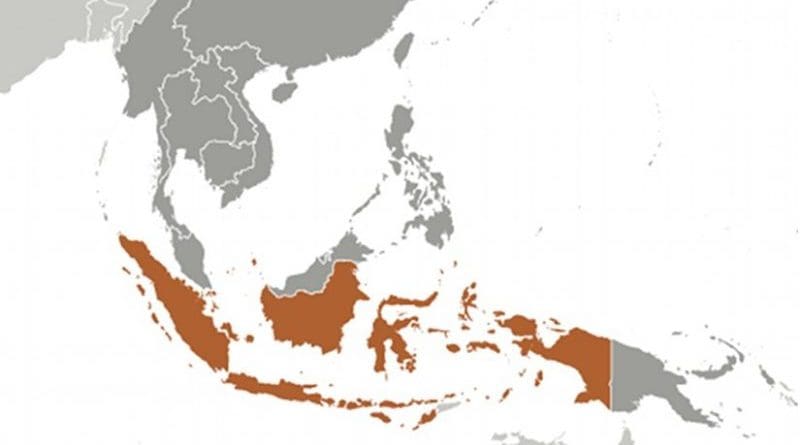The West Sumatra Earthquakes: Not Learning Our Lessons? – Analysis
By RSIS
A big earthquake hit the ocean floor off Southwestern Sumatra, Indonesia on 2 March 2016. Tsunami warnings were issued by the government to the whole Sumatran regions. How effective are Indonesia’s tsunami warning systems today?
By Jonatan A. Lassa*
Tsunami warnings issued by the Indonesian authority soon after the 7.8 scale earthquakes that struck off West Sumatra on 2 March 2016 were cancelled a few hours after the activation of the warnings all over Sumatra by the Meteorology, Climatology and Geophysics Agency (BMKG).
Though the earthquakes were powerful enough to be felt in some parts of Singapore, they were determined to be less tsunamigenic than thought as they occurred at about 650 km off the Sumatran fault line. Still there were noticeable gaps in the Indonesian Tsunamis Warning Systems.
Noticeable Gaps
In Mentawai Island, the closest populated region situated about 650km from the epicentre, tsunami sirens were activated. In most of West Sumatra province, local communities reportedly moved to evacuation shelters and higher ground as well as tall level buildings. Traffic jams resulted when people rushed towards higher places. Probably no authority in the world could eliminate all the complexities of large scale evacuations from tsunamis and other natural hazards.
In West Aceh, some tsunami sirens failed to transmit warnings. Still, at least some local communities were able to evacuate in time. Word of mouth, social media and car alarms from local officials regarding the changing behaviour of the seawater created a rather ‘necessary panic’ that pushed the people to evacuate.
However when trying to calm their local communities, the local authorities tried to physically go to the coast to monitor the behaviour of sea water even after being in close contact with national authorities about the status of the tsunami warning. The behaviour is risky and could not be justified. This exemplifies the serious gaps in the system at local level.
National and international media have consistently reported the gaps of the Indonesian Tsunamis Warning Systems (InaTEWS). BMKG and BNPB have been open about the gaps in the warning systems. Two notable gaps were: Firstly, all the buoys did not work. Secondly, a few sirens in West Sumatra province and West Aceh failed to transmit any warning.
Reuters quoted the BNPB spokesman Sutopo Purwo Nugroh as saying all 22 of the early-warning buoys Indonesia deployed after the 2004 tsunami disaster were inoperable when a massive undersea earthquake struck off the coast”.
Yet Indonesia had been acknowledged by the United Nations as a disaster risk reduction champion in 2013 during the presidency of Susilo Bambang Yudhoyono or SBY. The BNPB spokesman was frank when he commented: “We can easily forget. After the quake in Aceh we wanted to do everything, but by 2015 we don’t have money allocated (to fix the buoys).”
Lack of Maintenance Culture
International and bilateral donors have been supporting the development of InaTEWS soon after the Indian Ocean Tsunamis in 2004, in which some 170,000 were killed in Sumatra. Since its earliest development, local and national authorities and their donors placed too much emphasis on the technology and often failed to adequately focus on people.
However, to be fair, there have also been some positive changes especially at both government and community levels. Despite the substantial gaps still remaining in the warning system, there have been some progress worthy to be sustained and improved upon.
Where local communities could not feel the tremors of the earthquakes, they have to rely on the government to forewarn them about distant tsunamis. Therefore, buoys become critical indicators for the authorities to understand changing behaviour of the ocean heights to suggest potential tsunamis along the coasts.
However, they cannot expect too much from the buoys. Two reasons were given by the BNPB spokesperson: Firstly, most of the buoys do not function and have broken down because they have been vandalised. Secondly, Indonesia did not allocate funds for maintenance of the bouys which must be done every six months. Furthermore, Indonesian politicians often fail to regularly invest in disaster reduction.
Sutopo added that Indonesia needed 1000 additional warning sirens. This lack of basic facilities can be justified. However, what is often overlooked is the need to build a strong maintenance culture. Previous experiences have suggested that many tsunami sirens were not functioning due to the lack of regular maintenance by local disaster management authorities.
Going Forward
Overall the good news is that apart from the identified gaps, the impression about tsunami preparedness is more positive at the local community level. One reason: the West Sumatra regions are generally more prepared. Both local governments and civil society are more actively involved in building awareness. Actually even without buoys, the government and the international TEWS can provide quick predictions and issue tsunami warnings.
But amid this lack of robustness in the system, alternative and complementary routes can be created to build effective tsunami preparedness. An effective TEWS should allow failure in one component without paralysing the whole system to operate. There has been a growing sophistication in tsunami modelling technology over the last ten years. Such improvement in tsunami-modelling processes often provide quicker results, especially when combined with community level preparedness, adequate capitalisation of social media and committed local disaster management authorities.
However, again, the devil is in the details. Further studies needs to be done to learn from this event: For instance, who were the people who did not evacuate at all, and why? What happened to their assets during the evacuation? Did both local authorities manage to guard the assets of the evacuees? What are the key variables that pushed people to evacuate?
All these events have unfortunately passed without adequate lessons being learned by scientific communities and the relevant authorities.
*Jonatan A. Lassa is a Research Fellow at Centre for Non-Traditional Security Studies (NTS) at the S. Rajaratnam School of International Studies (RSIS), Nanyang Technological University, Singapore.

